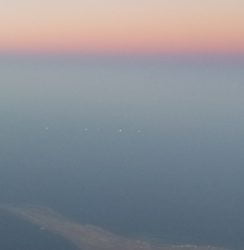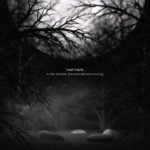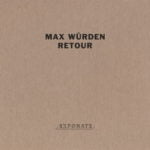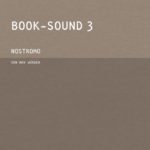JOE EVANS – ELEMENTAL STATES
The music of Joe Evans is never simply ‘improvised from the heart’. Album concepts are meticulously thought out, chord progressions can be explained with mathematical precision and involve ‘numbers, particular ratios, using them to determine rhythm, scales and tuning, with the aim of achieving a balance between dissonant and consonant sonorities.”
Yet the result is often sounding as if it is in harmony with complex natural processes – it is never the kind of avant-garde that has a lot of formal rules but is unbearable to listen to. This means the resulting music can be enjoyed on many levels.
Elemental States investigates “the analogy between the four classical elements (Earth, Water, Air Fire) and the four states of matter (Solid, Liquid, Gas, Plasma)’ – as well as their relation to the musical intervals based on the same prime number.
That may sound as a complex matter, and it probably is, but if you want you can simply forget about it and just enjoy the music created from environmental recordings paired with sound sources from household object made of glass or metal.
The first four elements use ‘only acoustic sounds with no artificial reverberations’ – but there’s a fifth element: Ether, ‘having no equivalent as a state of matter in nature’ which is created synthetically.
MARK HARRIS – IN THE FOREST THE ANIMALS ARE MOVING
Like Joe Evans, Mark Harris also works with strong system based elements and generative processes as a starting point for his immersive works. He has developed a number of custom software applications to work with in a live performance environment. And the result, too, has a very natural feel to it, ‘a sense of time and place, that ultimately generates a strong emotional response in the listener’.
In the Forest…. is divided into five segments that form one single, 46 minute piece.
“The whole piece develops slowly, however in a break with my previous compositions in “in the forest” includes more “dramatic” sections where I make use of feedback and overdriven distorted sounds and move the piece out of the ambient cannon..”
While working on the project, gradually other elements were added: live electronics, field recordings and some heavily processed prepared guitar.
One would expect a lot of environmental forest sounds, but they are surprisingly absent here (or hidden deep). Instead, there is a returning bell sound that one would not expect to hear in a forest. As Harris explains, the title comes from a recurring dream “of being alone in a forest at night and hearing a single repeated bell which I used orientate myself to find my way home and avoid the wild animals that I could hear moving around unseen in the forest… “
MAX WÜRDEN – RETOUR
Retour is the second edition from a new Kompakt series curated by Wolfgang Voigt called Exponate: ‘to bring together new artists from diverse experimental backgrounds. To open up new musical spaces and to sound out the increasingly liquified confines between abstract ambient music and art music, between electronica and new music.’
The tracks are created from original 4-track tape-recordings from the 90’s, which were treated ‘as if they were only three weeks old’.
And they dó sound remarkably fresh indeed: floating around somewhere between immersive ambient and more electronic soundscapes.
Considering the Exponate series statement it is not entirely clear where ambient music turns into art music, or where electronica ends and new music begins – but then again: this may have been the exact purpose from this series to begin with!

MAX WÜRDEN – RETOUR
MAX WÜRDEN – BOOK-SOUND 3: NOSTROMO
The Book-Sound series is one of an ongoing side-project: soundscapes that are intended to be listened to while reading books.
Book-Sound 1 – Lok was written for a specific book: Die Lokomotive by Thorsten Nesch, but also for use with ‘other dark tales’.
Book-Sound 2 – Transfer was created to play while reading ‘horror, mystery, fantasy and other dark tales’.
The third edition is named Nostromo (after the ever-inspiring spaceship from Alien) – and so specifically intended for reading science fiction.
In the hour-long soundscape you can easily hear the distant thumping of the spaceship’s motor – there’s a lot going on sonically while at the same time the music has a strange ‘hibernative’ atmosphere.
Of course, it’s not obligatory to read books while listening – they are also perfect for immersive solitary listening sessions.






